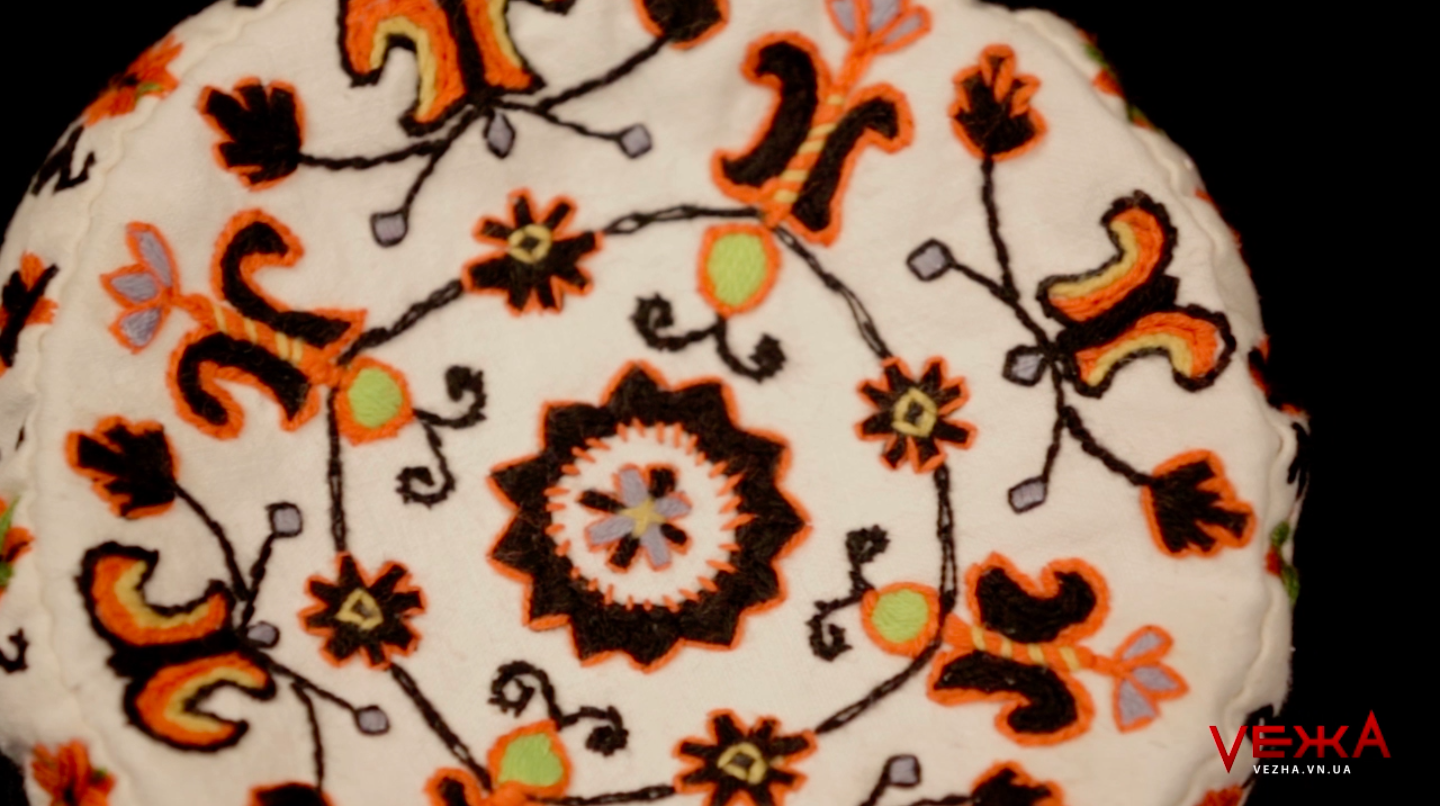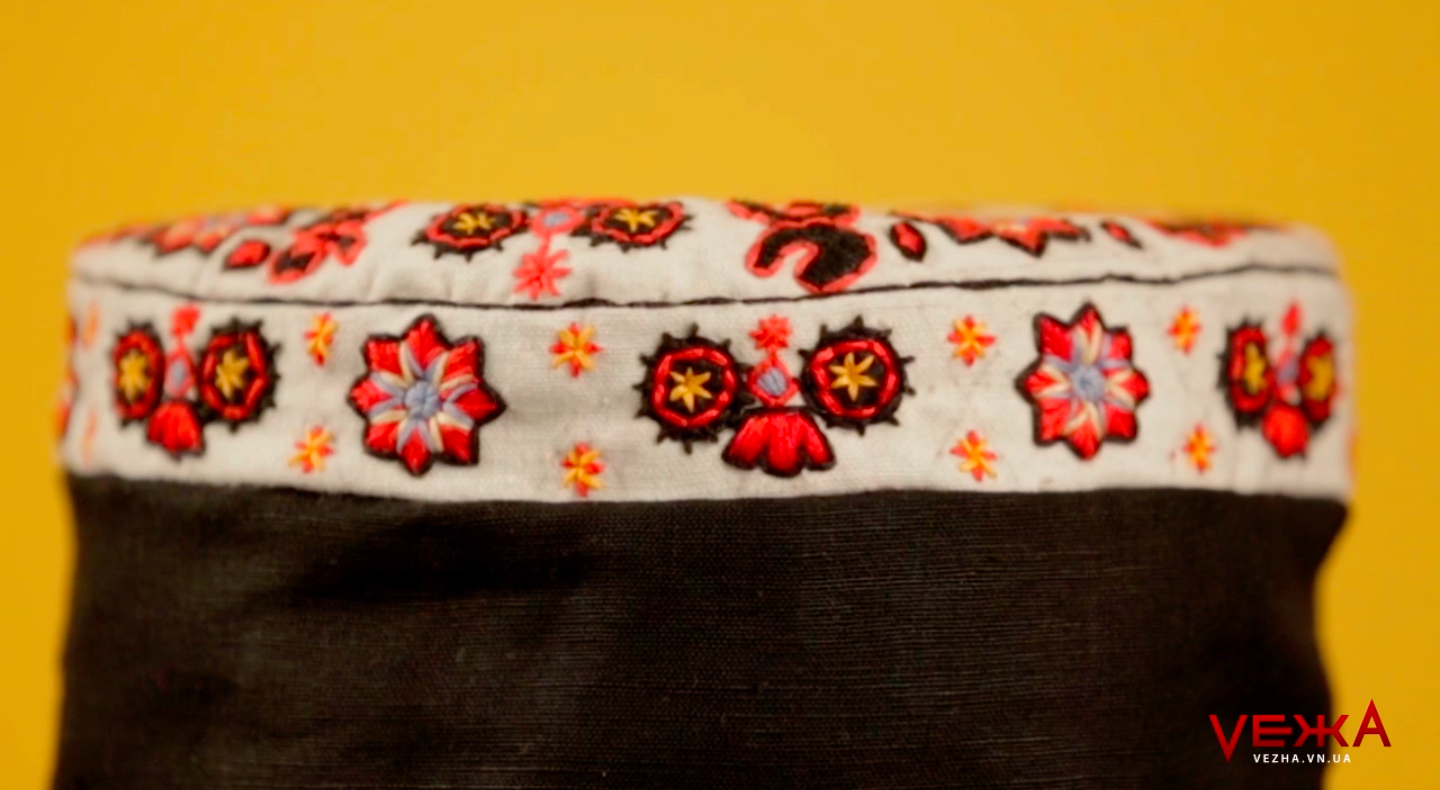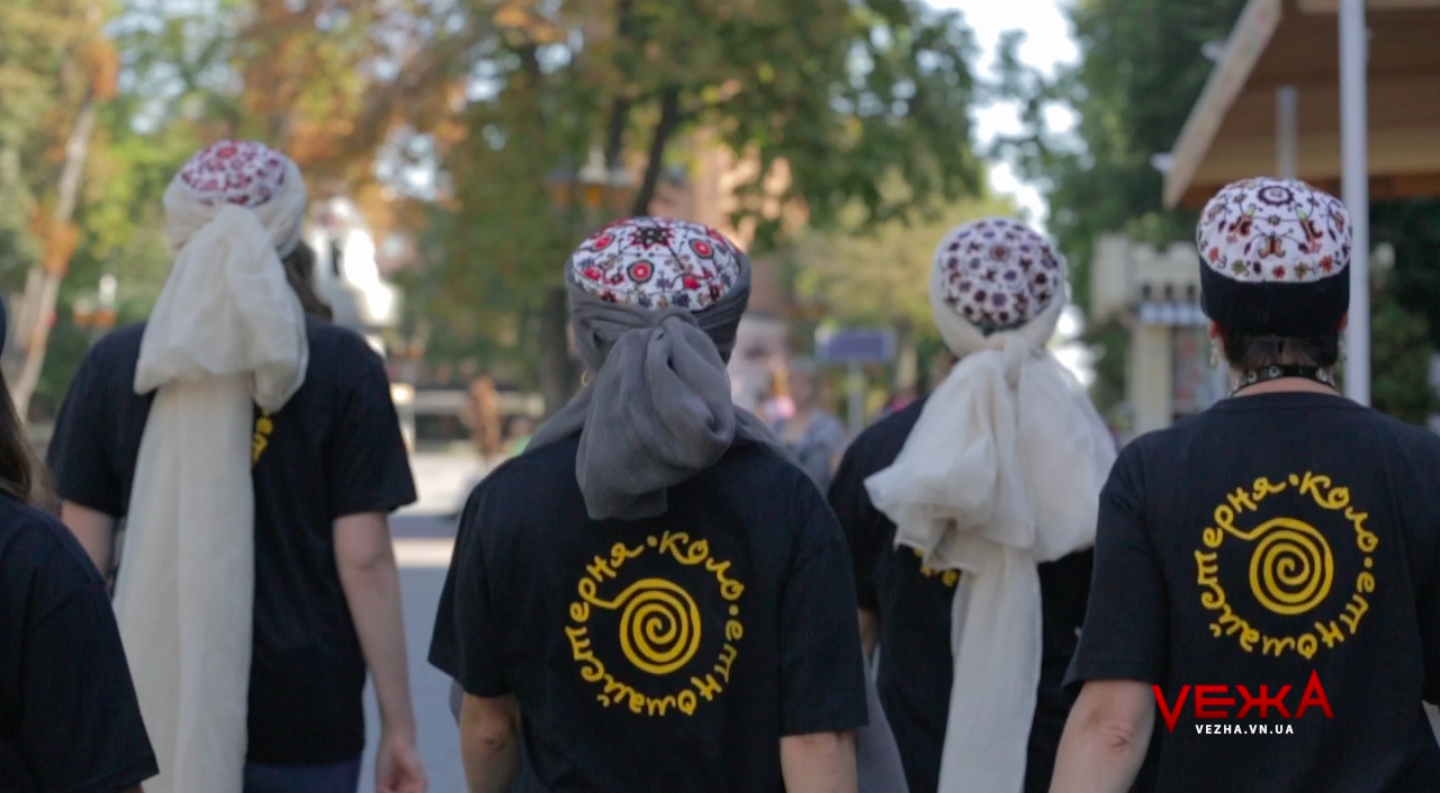Ethnic workshop “Kolo” was established only one year ago, but during such a short period of time these energetic and motivated women not only managed to explore the history of hoods (particularly, Eastern Podolian hoods), but also began to revive the trend of wearing these traditional headgears.
Thousand-year-old headgear, prohibited in church
Natalia Sentemon, the leader and mastermind of “Kolo”, tells that hoods are the ancient analog of headcloth. It is confirmed by the fact that in old times women put them on right after wedding. Sacral meaning and importance of hoods for spiritual life of women is proved by symbols depicted on them and by rituals, in which that headwear was used. 
Symbols on hoods have not been completely analyzed by professional historians and ethnographers yet, but they definitely have a lot in common with images on Ukrainian pysankas – eggs with symbolic pictures, which originate from pre-Christian times. In Natalia`s opinion, these symbols are related to our Galaxy and cosmos in general, and that is why they played such significant role for women of the old times.
Read: Pysanka Tradition in Ukrainian Culture
Despite her great experience in investigating artefacts of such kind, Natalia tries to be very careful with her conclusions. She always notes that the history of hoods still needs deep professional research. However, some facts collected by “Kolo” members during their expeditions through villages of Eastern Podolia, and taken from works of other ethnographers, allow to affirm particular information.
“We do not have documented evidences, but we have been told that Christian priests had prohibited Podolian women wearing traditional hoods to visit church. Obviously, it was related to symbols on hoods, which have pre-Christian, pagan origins.” – says Julia Vasiuk from “Kolo”.
Women of that time could not completely forgo hoods, which had been carefully made and kept by many generations of their ancestors. Considering monopoly of Christianity, the women were asking at least to bury them in their hoods after death. 
Read: Ukrainian Traditional Garments
Ethnographers admit that burial in a hood also had sacral meaning: some women were sure that hoods were connected with the otherworld and cosmos. Therefore, they believed that in the moment of transition from one world into another, it was very important to wear a hood, which would work as a transmitter.
Muslin cloth under protection of UNESCO
“Kolo” ethnic workshop experts have found one of the authentic Podolian hoods in Vinnytsia State Folk Museum. That hood even had a wimple made of muslin cloth. Muslin is a unique type of cloth, currently protected by UNESCO. The secret of making muslin cloth is almost lost on the territory of Ukraine. Attempts to revive production of muslin were registered only in Volhynia region.
“We were trying to re-create authentic hoods, using the same authentic materials. We were searching for old cloth and threads in village coffers, where women keep their “treasures”. We also had to use some modern materials, but tried to choose colors and textures maximally similar to those that were used in old headgears.”– tells Anastacia Fomina, who was re-creating and sewing hoods by her own hands. 
The purpose is to make traditional clothes fashionable
Despite the fact that hoods were primarily used in rituals and had sacral meaning, women also wore them in everyday life, because these headgears were really attractive and comfortable.
“Nowadays, we wear hoods even with jeans as casual clothes, because they are comfortable and beautiful. We would like hoods to return into the life of Ukrainians as a forgotten but revived treasure of Eastern Podolia and the whole Ukraine.” – craftswomen of ethnical workshop say.
Source of information, video and photos: http://vezha.vn.ua. All photos belong to their rightful owners.
Podolian Hood: Prohibited Headgear of Ukrainian Women
Nowadays, you will hardly find any of these beautiful and at the same time sacral headgears of Ukrainian women. Unfortunately, most of Podolian hoods passed away together with their owners long time ago. The very few authentic items are kept only in museum expositions and in private collections. Recently, “Kolo” Vinnytsia-based ethnic workshop decided to explore mysterious story of this unique headwear, which served as a prototype and a predecessor of traditional Ukrainian headcloth.












